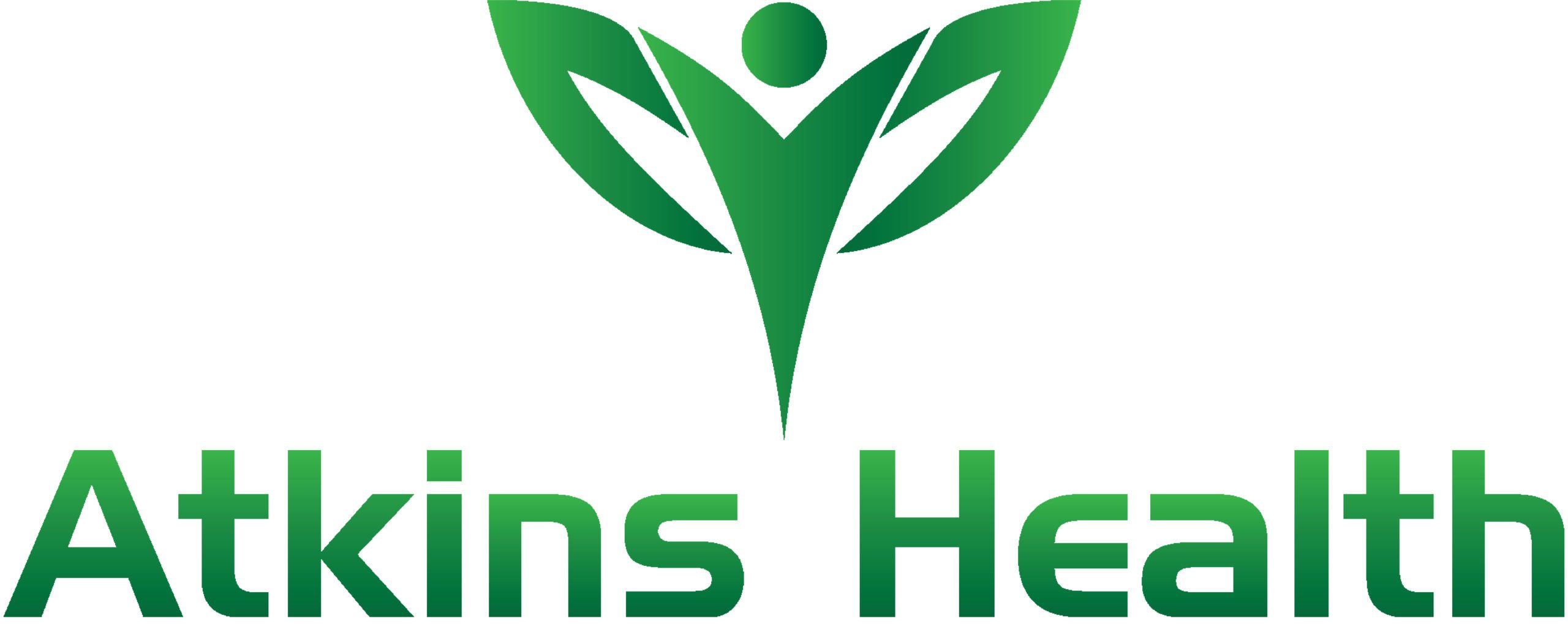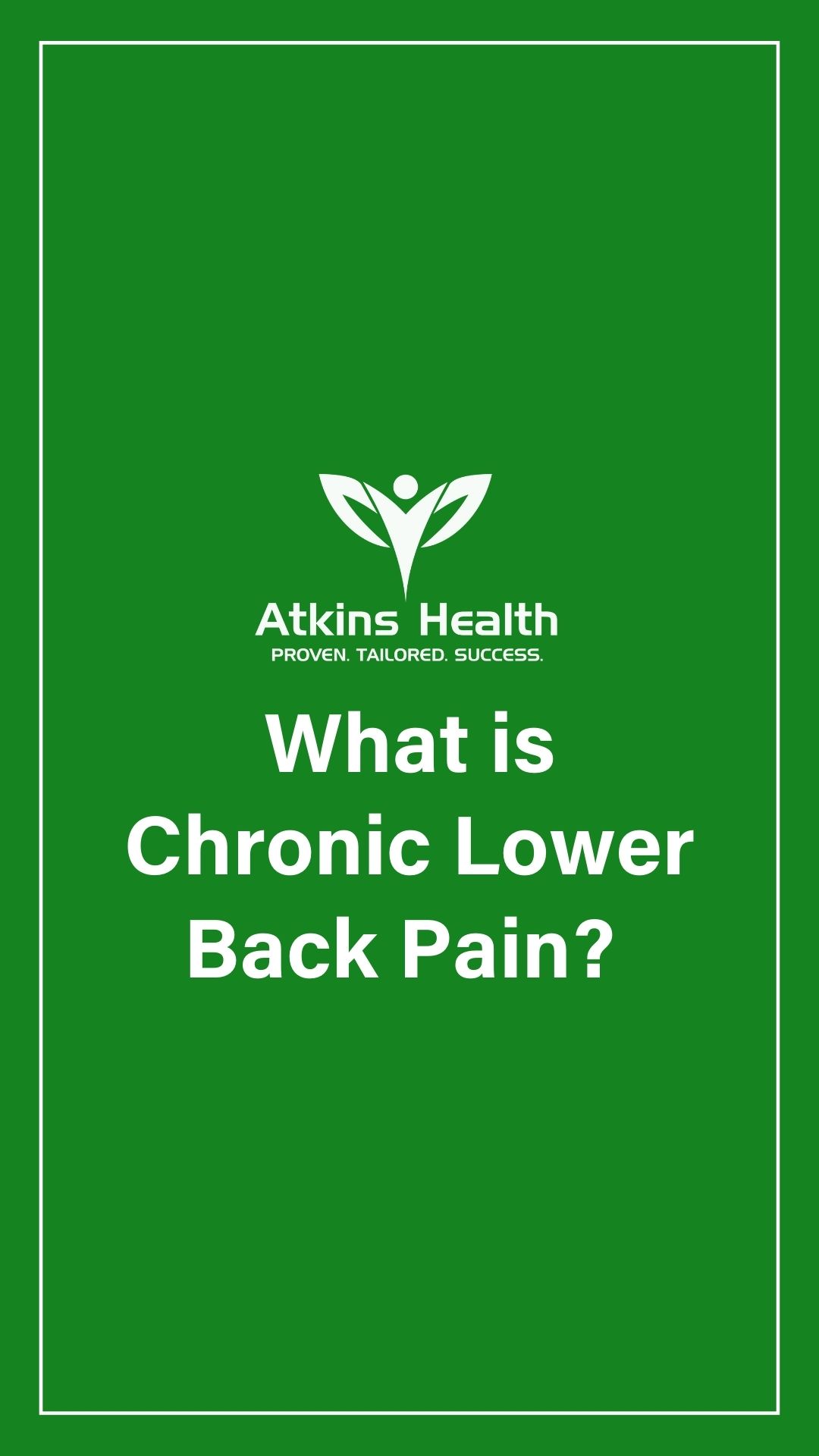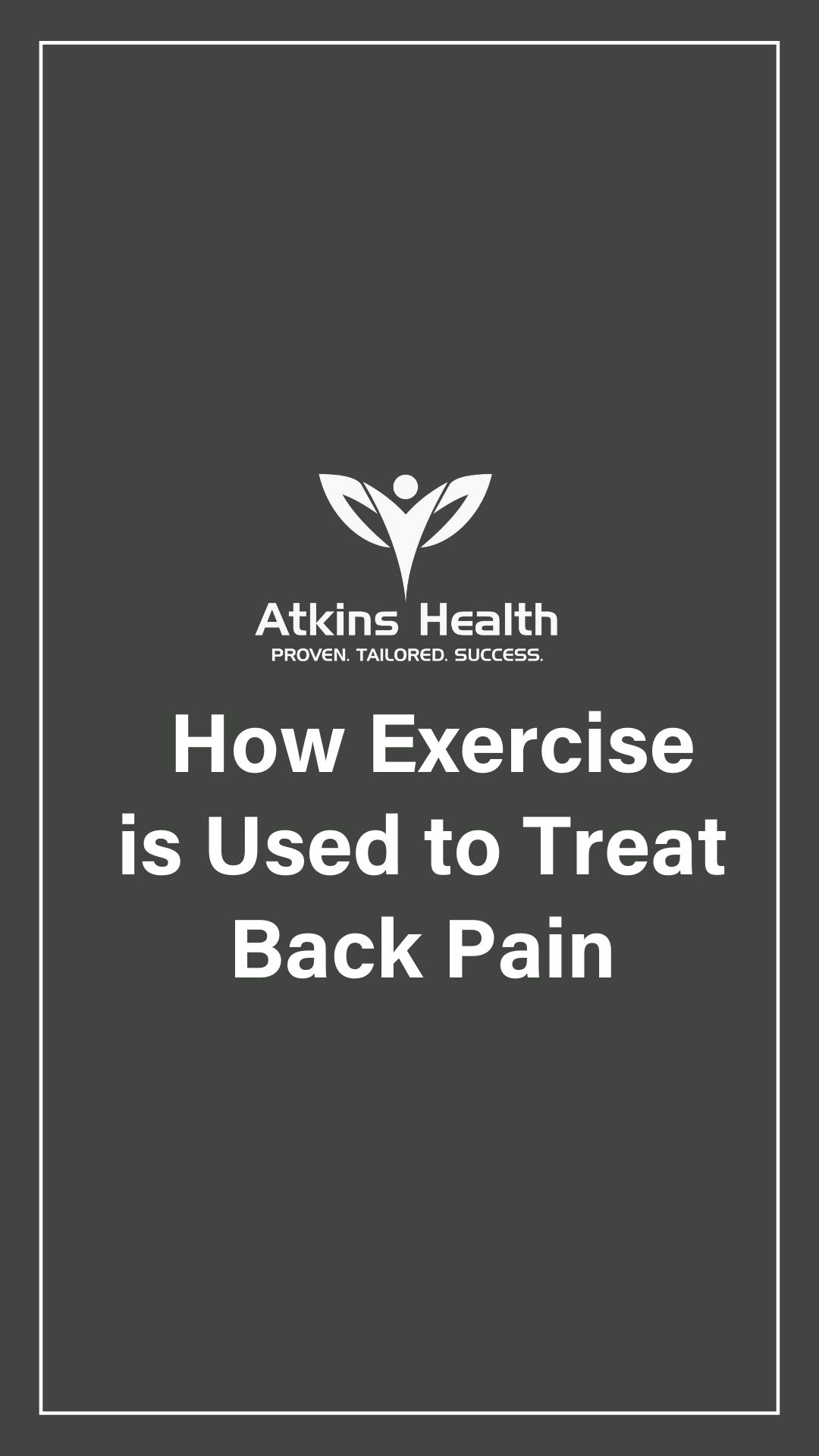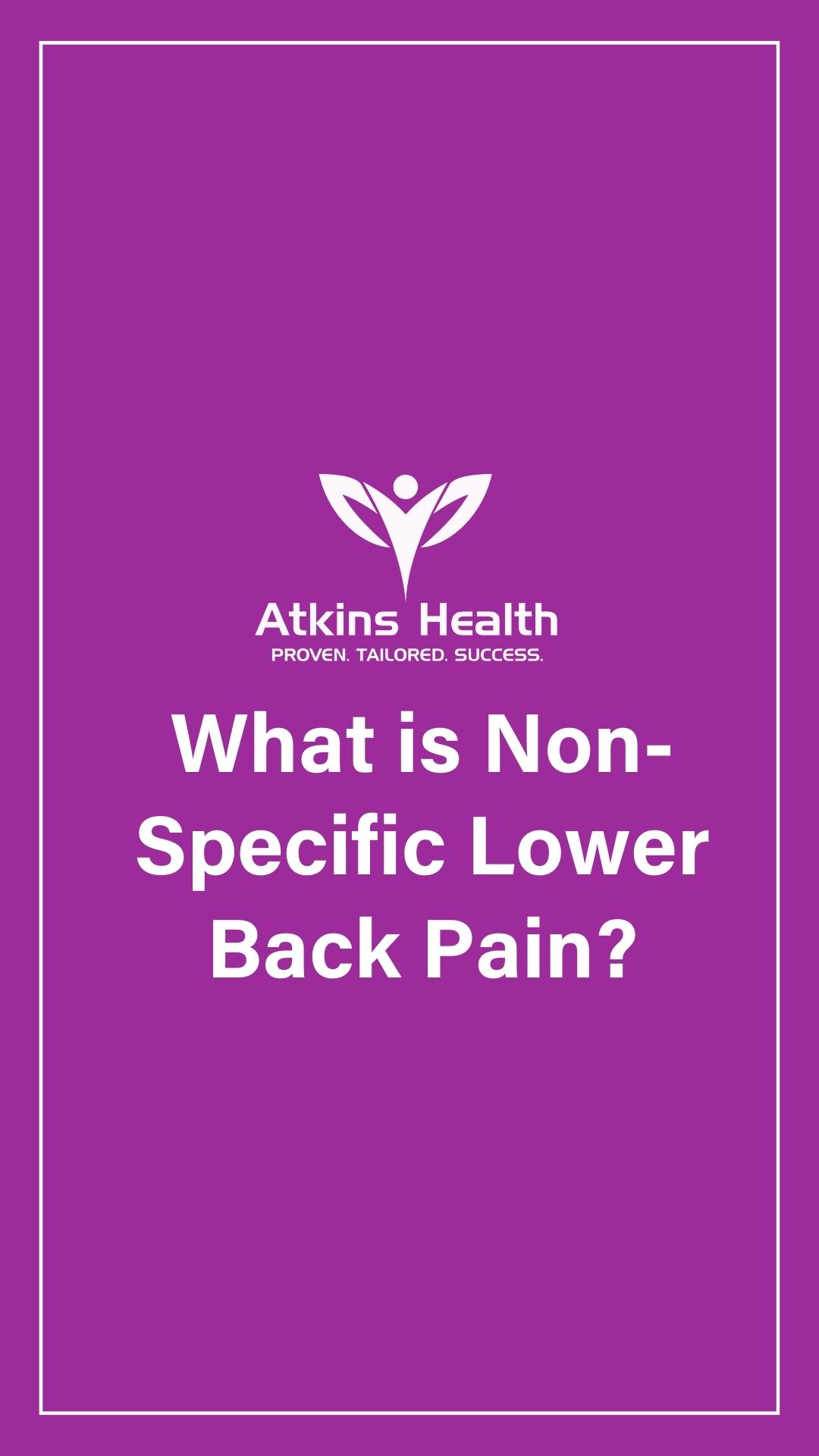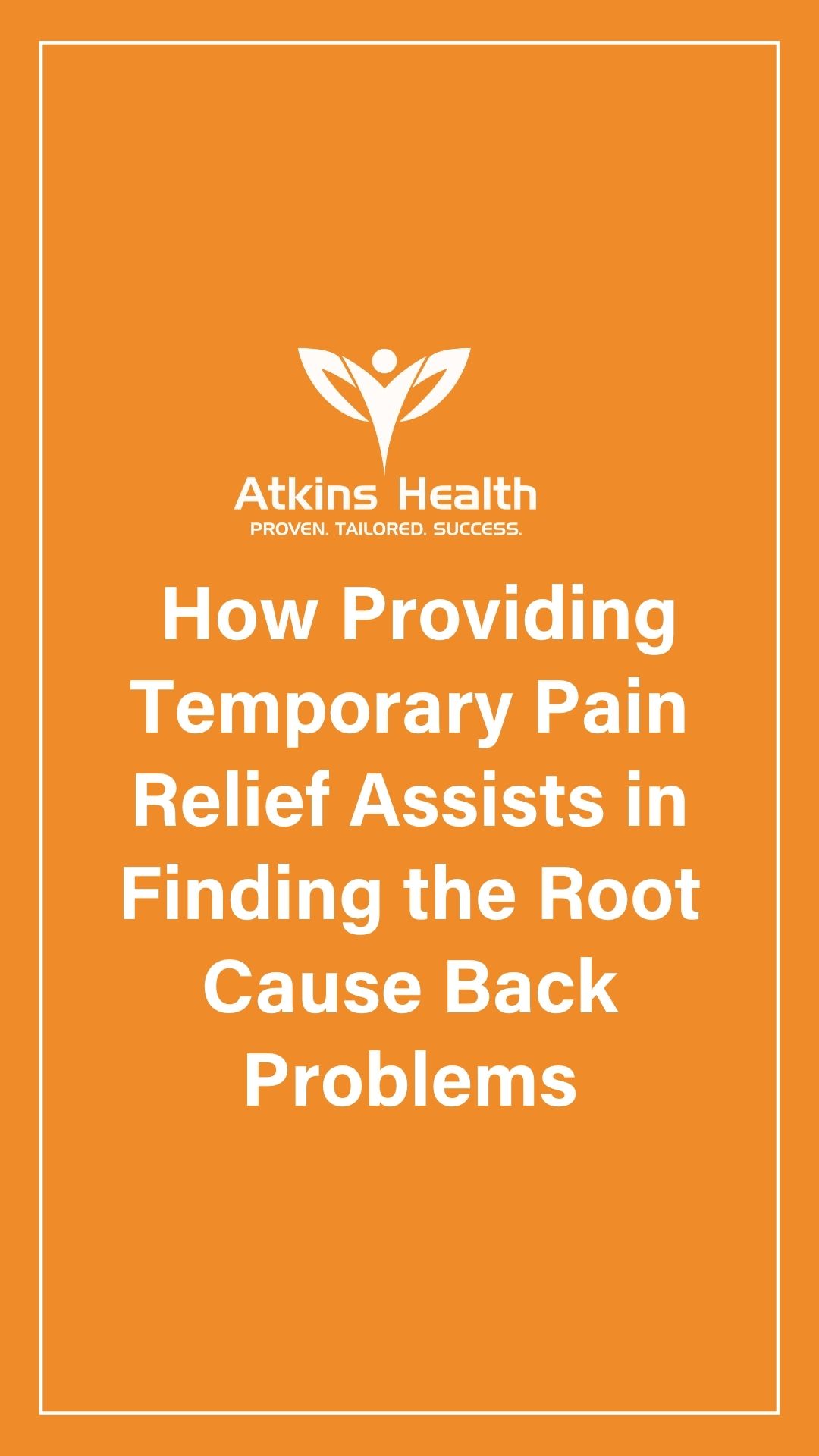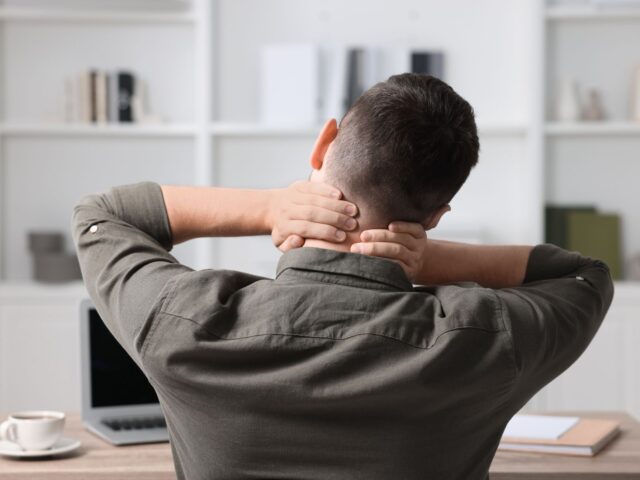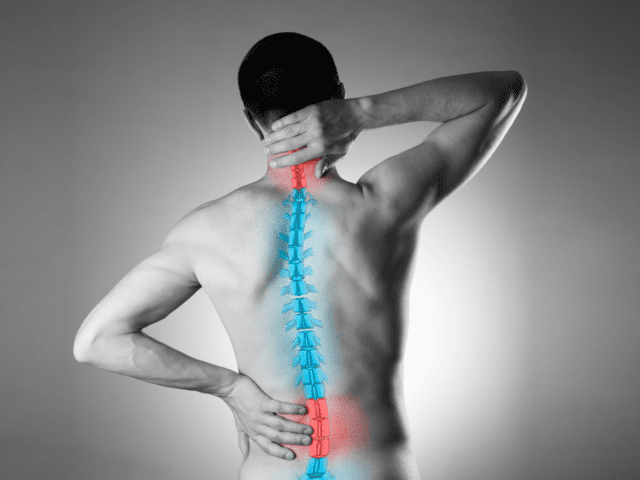Back Program
Welcome to Our Back Program
Whether you suffer from lower back pain, upper back pain, chronic back pain or pain from conditions such as sciatica or spondylolisthesis, we can help. Our back pain treatment program is designed to help back pain suffers or all ages and all fitness levels.
Take Action Today!
Whether you have been dealing with chronic back problems which have recurring painful episodes, or whether you’ve just experienced your first back pain – as a result of an acute injury for example – then our back pain treatment program is designed to help.
Back Conditions We Treat
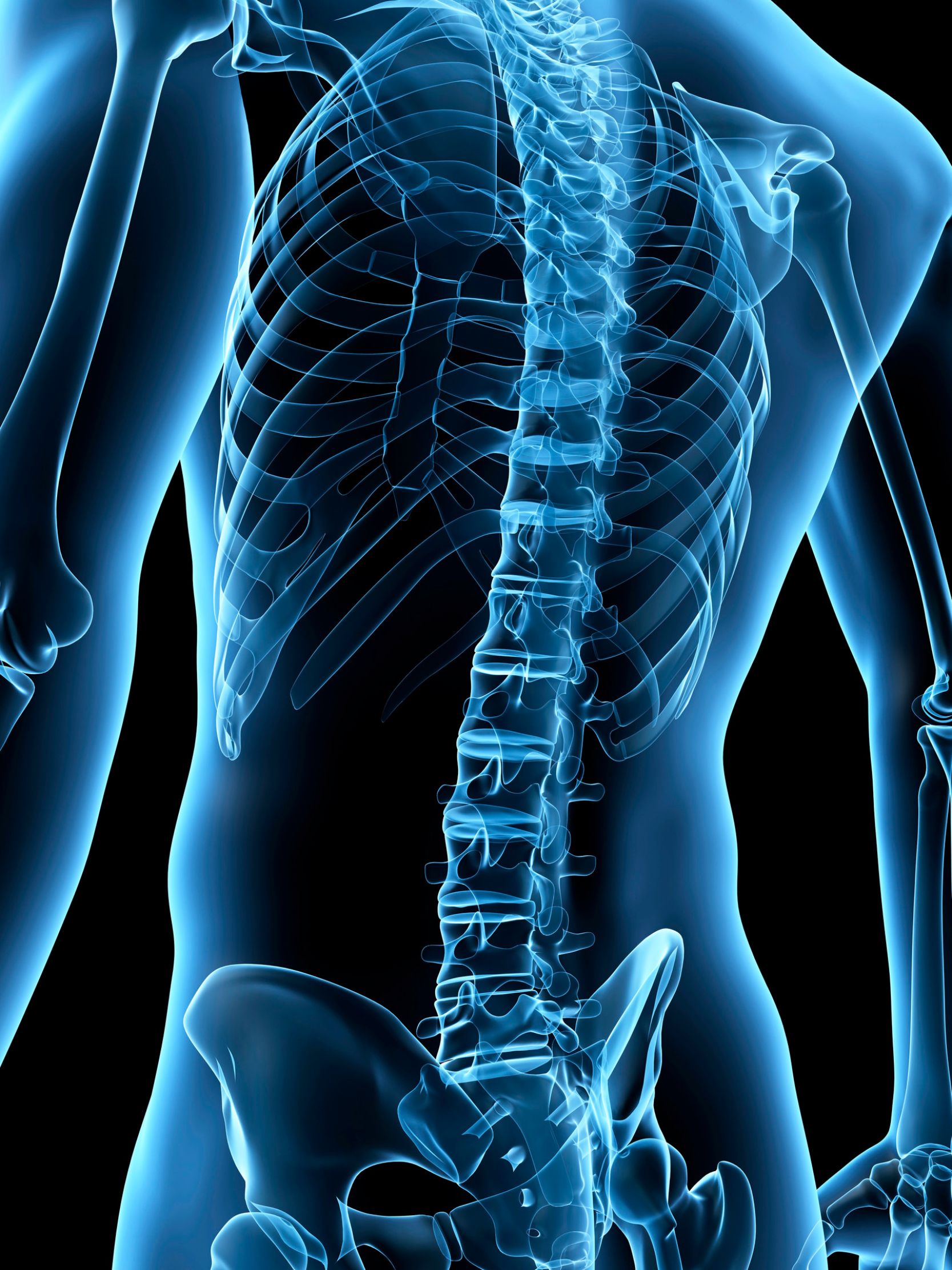
Osteoporosis
Osteoporosis does not directly cause back pain. It’s a condition that arises from substantial bone mass loss, leading to what are known as fragility fractures. These occur when a fall from standing height or less results in a broken bone. Fragility fractures can happen anywhere in the body but are typically found in the spine, hip, or wrist.
Signs of vertebral fractures may include:
- Back pain varying from mild to severe, potentially incapacitating
- Reduction in height
- Diminished spinal mobility and flexibility
- Stiffness in the spine
Stress Fracture
Spondylolysis refers to a defect or stress fracture in one of the vertebrae, the small bones constituting the spinal column. In certain instances, this stress fracture can weaken the bone to such an extent that it fails to sustain its correct position in the spine, causing the vertebra to shift or misalign. This condition is known as spondylolisthesis.
Both spondylolysis and spondylolisthesis are frequent sources of lower back pain in children and adolescents. Even without any identifiable injury, this condition or weakness can manifest in children as young as six years old. Adolescent athletes involved in sports that repeatedly strain the lower back, such as gymnastics, football, and weightlifting, can also experience such stress fractures.
Sciatica
Sciatica is a common type of pain affecting the sciatic nerve, a large nerve extending from the lower back down the back of each leg.
The telltale sign of sciatica is pain that starts in the lower back and shoots down one leg, sometimes all the way into the foot. It can happen with an injury or just with the wear and tear of ageing.
Stenosis
Spinal stenosis refers to the constriction of one or more areas within the spinal canal, a tunnel that houses the spinal cord and runs through every vertebra in the spine. The reduction in space inside the spinal canal can squeeze the spinal cord and its branching nerves (nerve roots).
When these nerve spaces become narrow, it can result in the irritation, compression or impingement of the spinal cord or nerves. This often manifests as back pain or other nerve-related problems such as sciatica. Various conditions and injuries can contribute to the narrowing of the spinal canal.
Pars Defect
Spondylolysis, Pars defect, and Stress fracture – these three labels all point to the same medical issue. Spondylolysis represents a stress fracture that occurs in the pars interarticularis of the lumbar vertebrae.
The pars interarticularis (pars) lies between the superior and inferior articular process bilaterally at each vertebral level and is the most susceptible area to repetitive stress damage. This is a relatively prevalent condition, affecting one in every 20 individuals.
Herniated Disc
A herniated disc, also referred to as a slipped, ruptured, or bulging disc, is a prevalent source of neck, back, and leg pain. A herniated disc is a spinal injury — the spine consists of a series of bones known as vertebrae, extending from the base of the skull to the tailbone. These vertebrae are cushioned by round buffers known as discs that facilitate bending and movement.
When one of these discs tears or leaks, it results in what is termed a herniated disc. Flexion and/or rotation movements can aggravate herniated disc-related pain. These discs can recover naturally to a state that doesn’t cause pain but often require straightforward care procedures.
Facet Joint Pain
Located in the posterior section of the spine are the facet joints, present at every vertebral level, with one on either side of the spine. Facet arthritis can lead to discomfort and stiffness. The pain associated with this condition is usually localised in the spine close to the affected joint, but it can also manifest in other parts of the body.
For instance, cervical (neck) facet arthritis may cause pain that radiates towards the back of the head, ear, or shoulder. Similarly, lumbar (lower back) facet arthritis might result in pain extending towards the buttock, hip, or thigh. Certain movements like extension or long periods of inactivity or sleep often exacerbate the pain.
Degenerative Disc Disease
Degenerative Disc Disease (DDD) is a condition characterised by the weakening of one or more discs in the back. Despite its name, it isn’t exactly a disease, but rather a progressive condition that develops over time due to wear and tear or injury.
The discs in the back are situated between the vertebrae of the spine, serving as cushions and shock absorbers. These discs play a crucial role in enabling standing upright and carrying out daily movements like twisting and bending. As time goes by, degenerative disc disease can progress, potentially leading to pain ranging from mild to severe, which can disrupt daily activities.
Osteoarthritis
Spinal osteoarthritis refers to the deterioration of the cartilage in joints and discs located in the neck and lower back. Occasionally, this condition can lead to the formation of spurs that exert pressure on the nerves exiting the spinal column, resulting in weakness and pain in the limbs.
Typically, osteoarthritis is associated with aging. However, there are several reasons why younger individuals may develop the condition, including a genetic defect related to cartilage, or damage or trauma to a joint.
In individuals under 45, osteoarthritis is more prevalent amongst men. However, post 45, the condition is more frequently observed in women. Overweight individuals are more likely to experience osteoarthritis, as are those engaged in occupations or sports that subject specific joints to repetitive stress.
Sacroiliac Joint Dysfunction
Also referred to as SI joint dysfunction, Sacroiliac joint dysfunction is a medical condition known for causing discomfort or pain in the lower back and/or legs. The sacroiliac joints are situated at the base of the back on either side of the spine, where the sacrum (the spine’s lowest part) connects with the iliac bones (components of the pelvis).
The role of the SI joints is to bear the weight of your upper body during standing or walking, transferring this weight to your legs. These joints also function as shock absorbers for the spine and contribute to the body’s stability.
Disruption of the joint’s normal movement, whether due to excessive (hypermobile) or insufficient (hypomobile) movement, can result in SI joint dysfunction. This condition can manifest through symptoms such as:
- Discomfort or pain in the lower back, hips, buttocks, or potentially the groin.
- Pain that could be sharp, dull, or stabbing, typically localized to one side of the lower back and may extend down the leg.
- Pain that can intensify with certain activities like standing, walking, or climbing stairs, but may alleviate when sitting or lying down.
Post Partum Back Pain
Postpartum back pain can be attributed to several factors, which include:
- Hormonal changes during pregnancy that result in the loosening of ligaments and joints.
- Overworked abdominal muscles used to support the “baby bump” and during childbirth (if labour was involved), potentially disrupting back alignment and overall posture.
- Constant bending, lifting, and rocking of baby, activities that become part of daily routines.
Incorrect handling of a growing baby can also subsequently contribute to postpartum back pain.
Spondylolisthesis
Spondylolisthesis is a spinal condition in which one of the vertebrae slips forward onto the bone directly beneath it. This can occur anywhere along the spine, but it’s most common in the lower back (lumbar spine).
There are various types of spondylolistheses, and the causes vary depending on the type. Some people are born with a congenital defect or fracture that leads to spondylolisthesis, while others develop it due to excessive wear and tear on the spine from age or sports. Physical trauma or certain diseases and conditions can also cause spondylolisthesis.
Symptoms of spondylolisthesis include lower back pain, stiffness in the back and tightness of the hamstring muscles, pain and/or weakness in one or both thighs or legs, and difficulty controlling bladder or bowel movements in severe cases,
Avoidance of single leg activities in early phases of rehab is recommended.
Phased Approach For Better Results
Our program is divided into the following four phases:
1. Reset
2. Reactivate
3. Re-educate, and
4. Reinforce
Each of these four phases is designed depending on where you are in your rehabilitation journey, and each has clearly defined milestones. We work closely with you to ensure that they are achieved in a timely manner, however if after reviewing and refining the treatment plan we find that there are obstacles outside the scope of the program, we have a team of highly skilled specialists to whom we refer.
Who Our Back Program Assists
Ignoring back pain can lead to several serious complications, and left untreated, acute back pain may become chronic, lasting for years. Severe cases of untreated back pain can cause nerve damage, leading to symptoms like numbness, tingling, or weakness in the legs or arms. It’s therefore crucial to seek professional help when experiencing back pain in order to prevent further potential risks. Early intervention leads to better outcomes.
Various Occupations
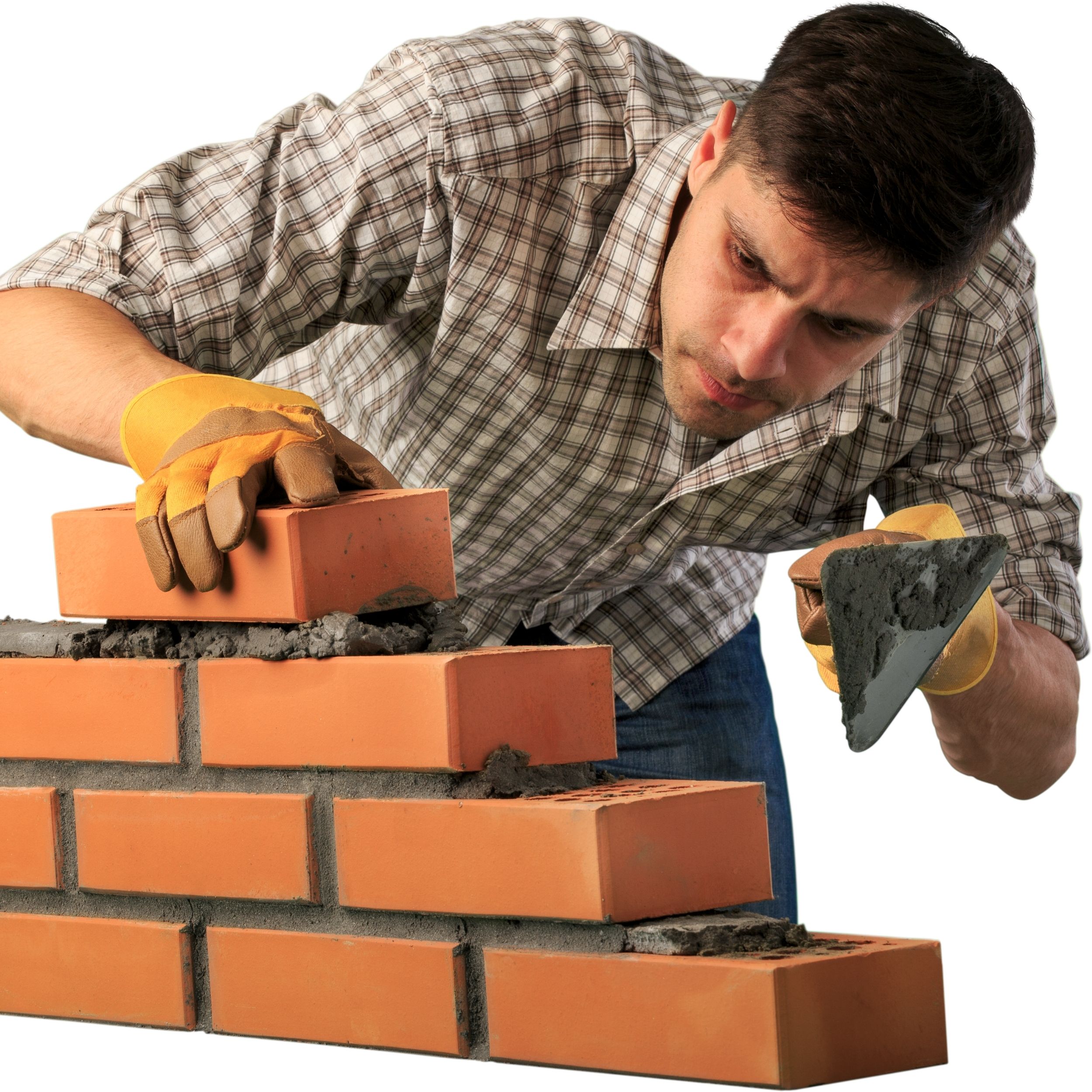
Occupations that involve strenuous physical activity can contribute to back injuries in several ways, such as heavy lifting, repetitive motion, poor ergonomics, prolonged postures, vibration, and insufficient breaks. Problems often arise from a lack of proper training.
Sports Injuries
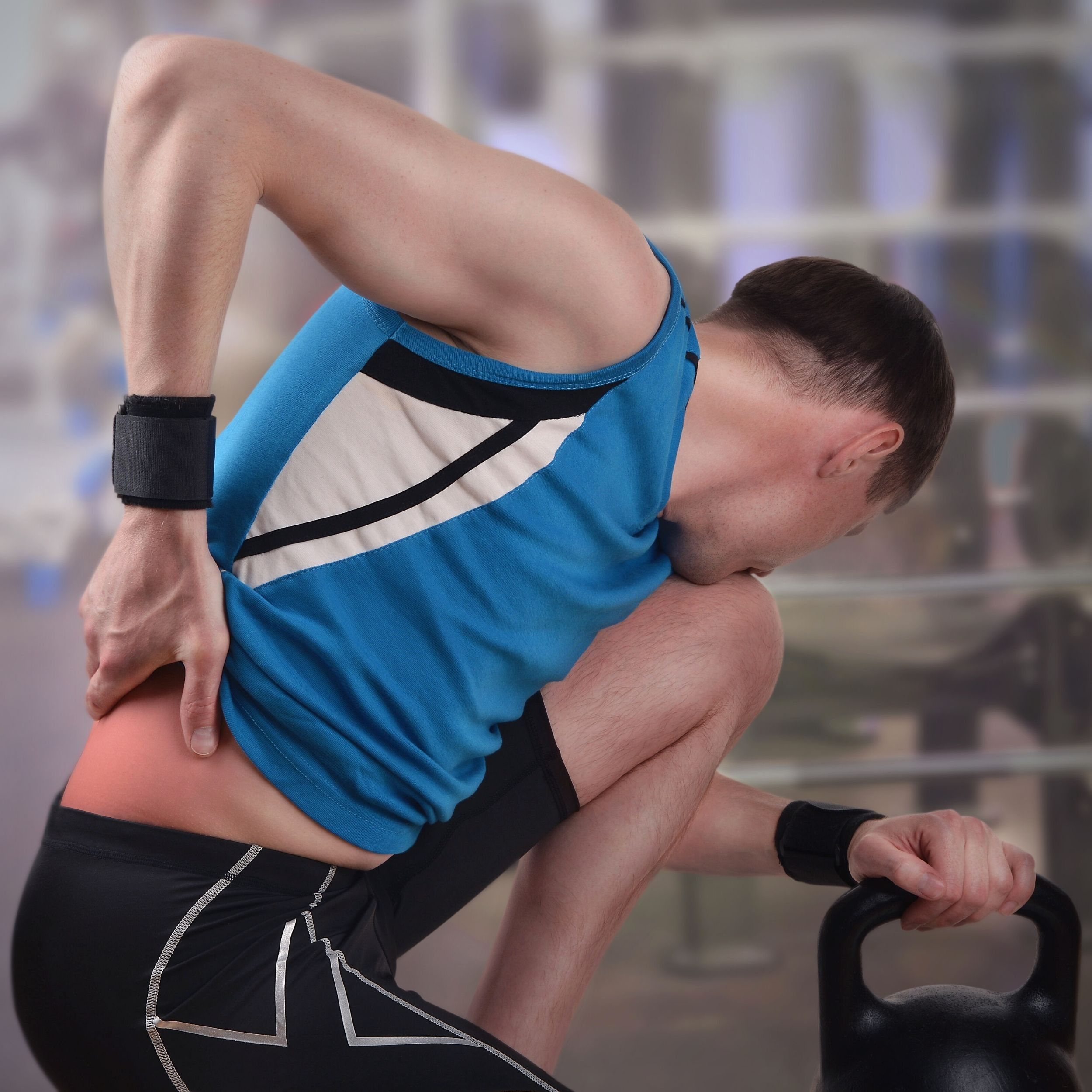
Sporting injuries can lead to back pain in a variety of ways: Strains and sprains (the most common), fractures, disc injury, overuse injury, spondylolysis and spondylolisthesis, and spinal stenosis. We also help with prevention strategies including proper conditioning and use of correct technique.
Ageing Australians

Ageing can lead to back pain caused by a variety of reasons. These include loss of muscle tone, osteoarthritis, osteoporosis, spinal stenosis, degenerative changes, and poor posture. Proper exercise, maintaining a healthy weight, and good posture can help and is important as we age.
Chronic Conditions
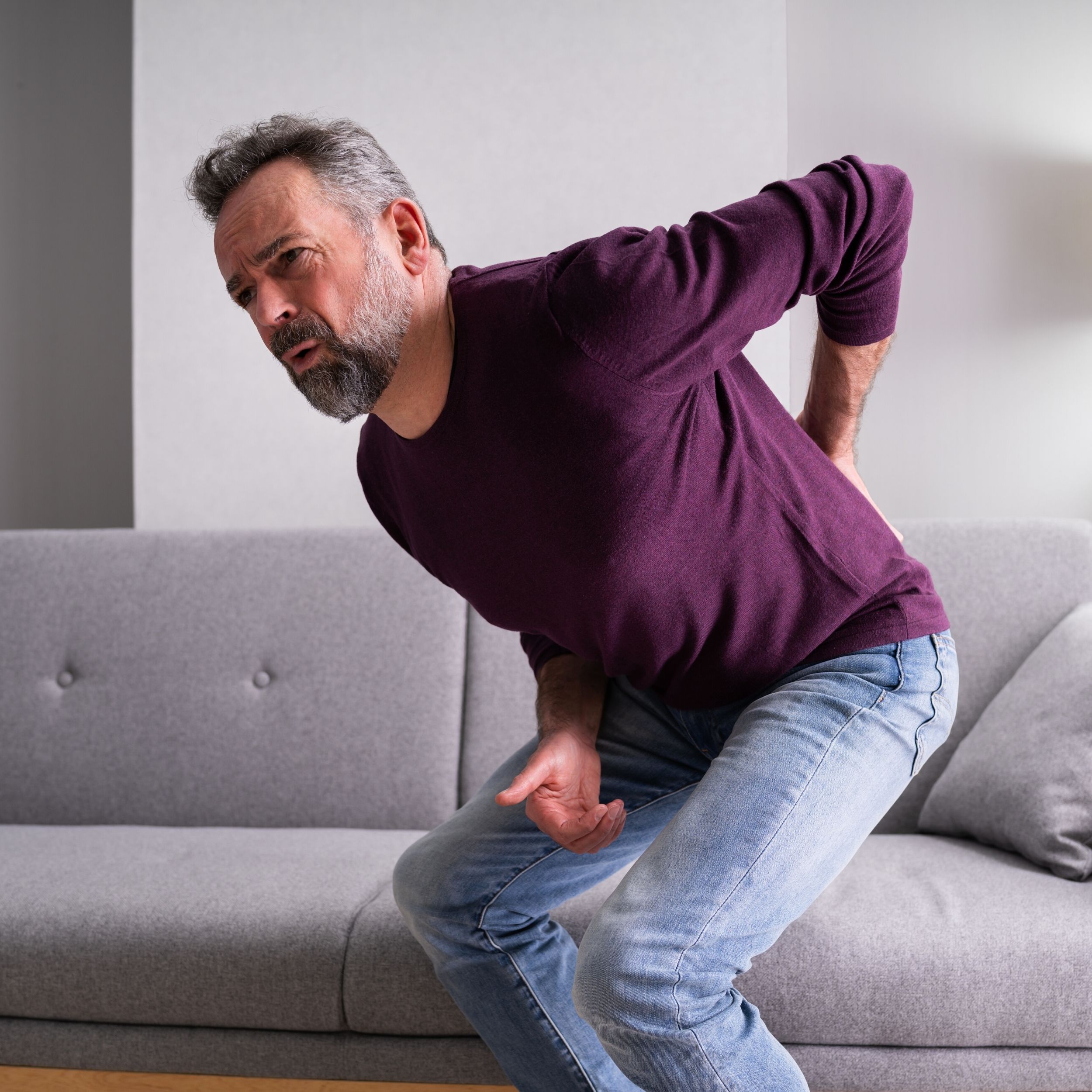
Chronic back pain refers to back pain that lasts for 12 weeks or longer, even after an initial injury or underlying cause of acute back pain has been treated. Common chronic conditions include herniated discs, sciatica, fibromyalgia, sacroiliac joint dysfunction, and degenerative disc disease.
Degenerative Diseases
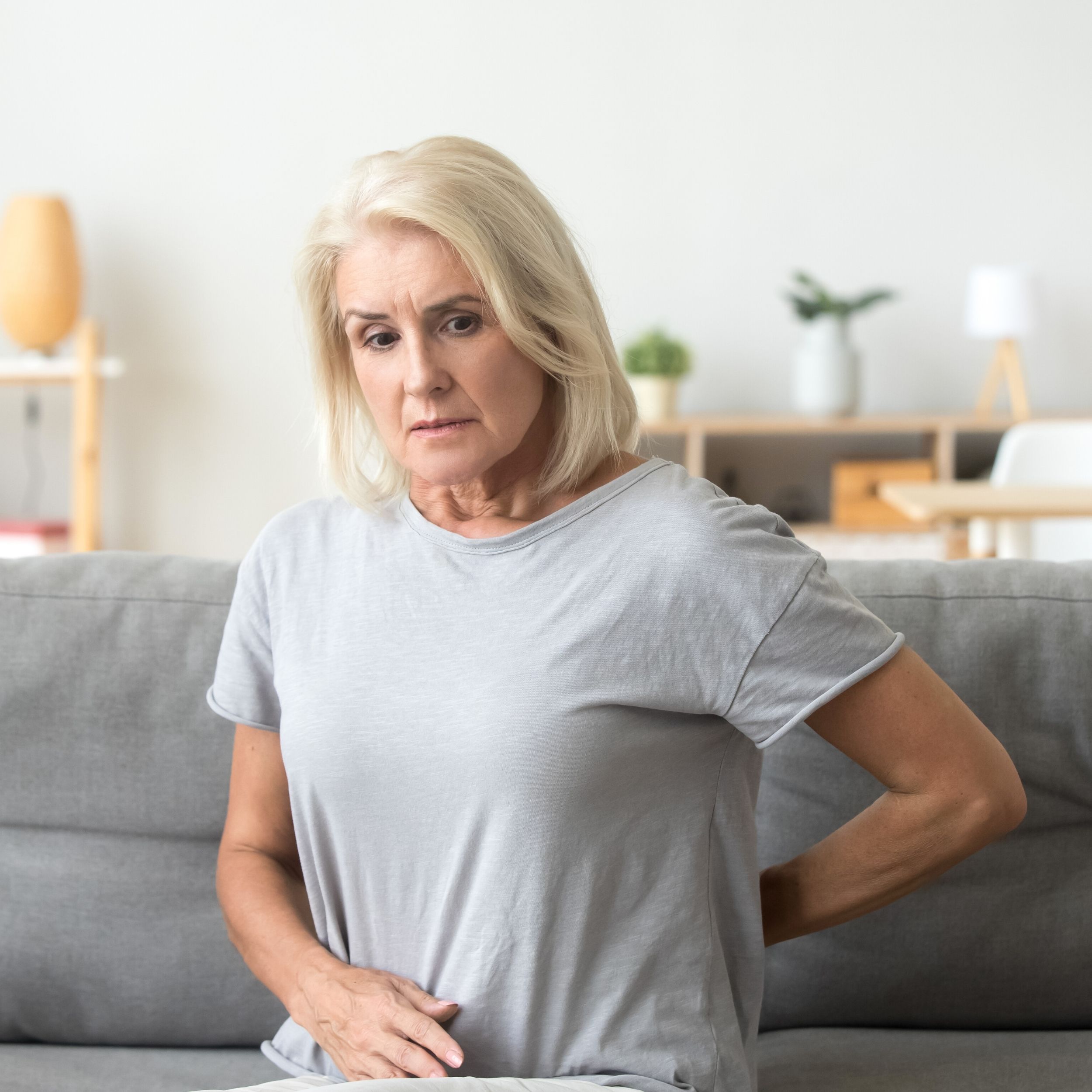
Degenerative back health issues are those that involve the gradual wear and tear or deterioration of the components of the spine over time. Some common degenerative back conditions include degenerative disc disease (DDD), osteoarthritis, facet joint syndrome.
Becoming a New Mum
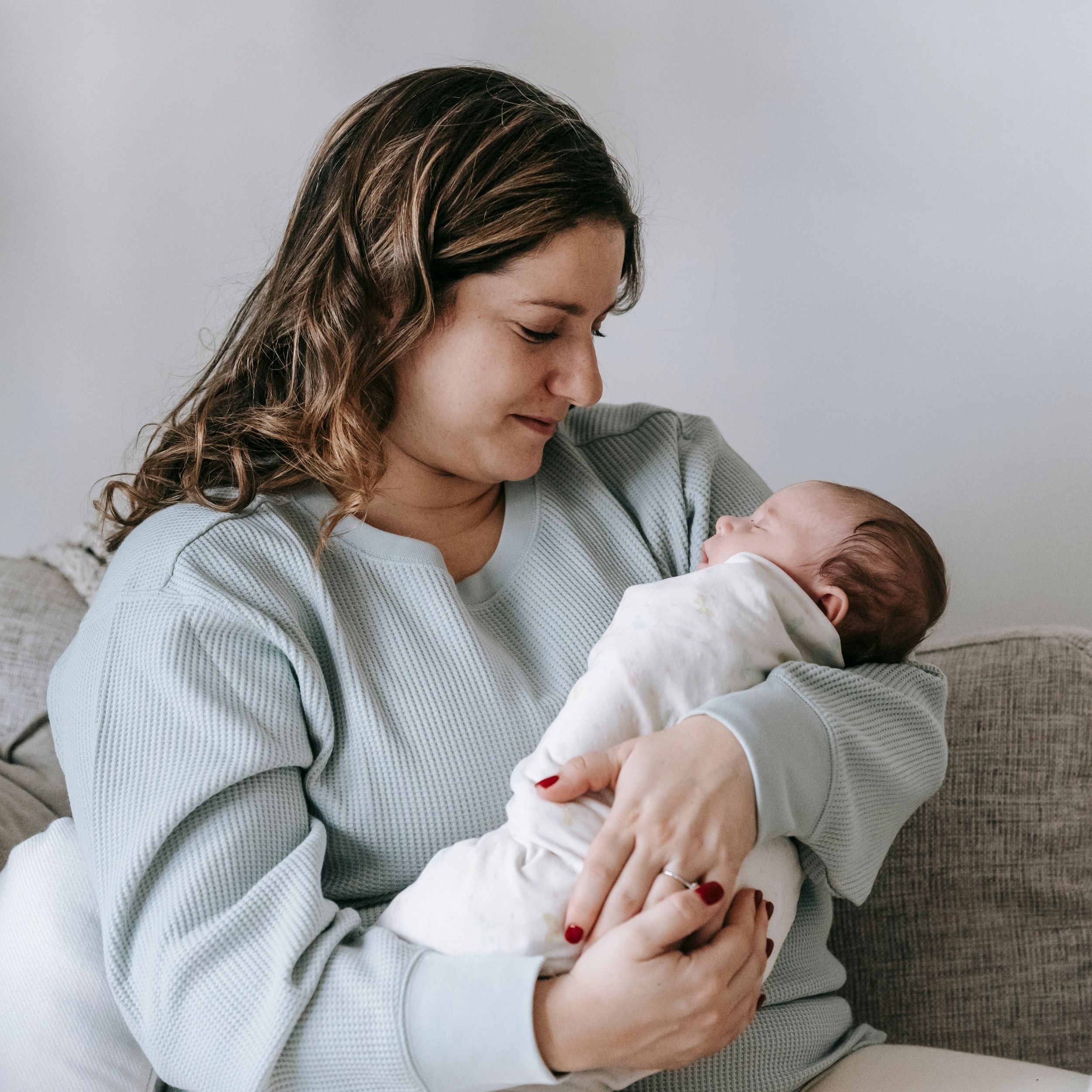
Pregnancy can cause back pain for several reasons including muscle separation, hormonal changes, stress, excessive standing or sitting, changes in posture, and weight gain. In nursing mothers back pain can result from poor posture while breastfeeding and lifting and carrying the baby incorrectly.
What’s Different About Our Back Health Program?
Our back health program has been developed over more than a decade of working with experts in the field of back health including world-leading surgeons. Our team has undergone extensive additional training and has worked with people of a variety of ages and back-related conditions. They understand the impact of how living with back pain affects quality of life and are familiar with the challenges that back pain sufferers experience in going about their daily lives.
We know what it’s like for back pain sufferers and the importance of getting them better.
We’ve Got Your Back
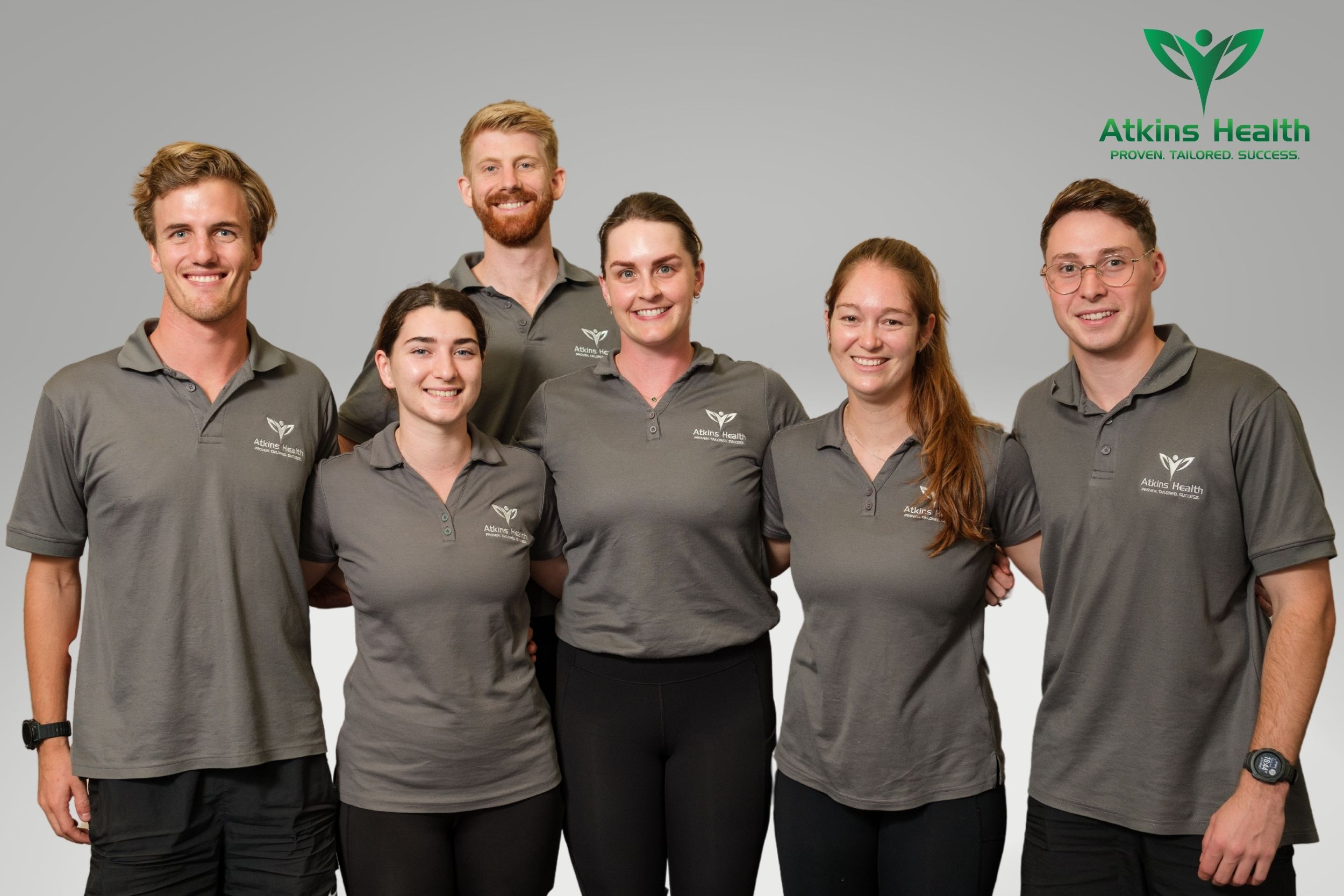
Atkins Health’s Back Program Team L-R: Brock Van Kampen, Bella Feranda, Toby Atkins, Jessica Percy, Paige Radford, Slavko Saric
We Know How to Help
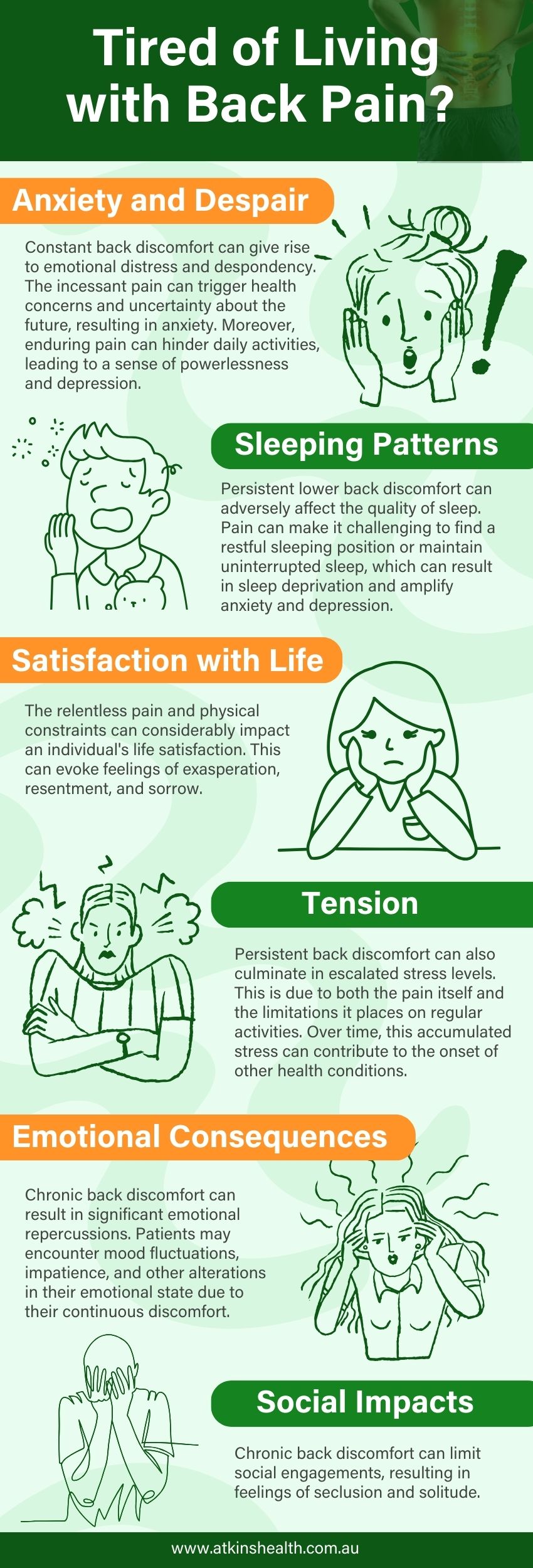
Our Multi-Disciplinary Approach to Back Pain
At Atkins Health we offer exercise physiology, physiotherapy, podiatry, and remedial massage, which form a powerful synergy in addressing back pain relief and improving mobility. Each discipline brings unique expertise, yet they intersect seamlessly to provide holistic care.
Exercise physiologists design tailored movement programs to strengthen and restore function, while physiotherapists focus on rehabilitation through manual therapy and targeted exercises. Podiatrists contribute their expertise in biomechanical alignment and foot health, ensuring a strong foundation for movement. Meanwhile, remedial massage therapists alleviate muscular tension and promote circulation, enhancing recovery. Together, these professions create an integrated approach, addressing the root causes of discomfort, optimising physical performance, and empowering individuals to move freely and confidently.
Where to Get Back to Better Health
Like to Know More About Treating Back Pain?
FUNDING YOUR ONGOING HEALTH CARE
Client testimonials
I’ve seen a number of practitioners over the years (chiro, physio, acupuncture) to try to deal with my spine and joint issues. I didn’t know about exercise physiology at that time, but I now realise it’s the missing link we’ve all been looking for to reach our health goals, prevent disease, and stay strong as we age.
ROBYN RYAN
I couldn’t be happier after a few sessions of treatment from Nuria at Runaway Bay. With a recurring injury in my back, I have finally been able to manage it for the first time in years. It’s given me so much confidence at work and for exercise.
TOMMY LOB
When I noticed recurring hip pain I asked for a recommendation for a physio. The staff lead me to Lorenzo (exercise physiologist). We developed personalised goals and exercises and worked 1:1 to achieve these. In the short 3 months I have been working with Lozrenzo I have seen a lot of change and my pain pretty much disappear. I am also smashing my goals!
RACHELLE DEVEREAUX
Latest Blog Articles
Neck pain can be caused by factors such as poor posture, muscle strain, injury, or an underlying health condition. Learn about how to get relief from neck pain.
Zac discusses osteoporosis causes, symptoms and treatment.

